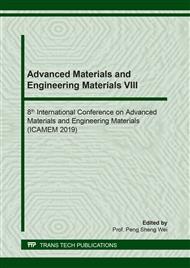p.457
p.463
p.469
p.475
p.481
p.487
p.493
p.499
p.505
Microfluidic Chip Injection Photo Solidification Molding Study on Reaction Kinetics
Abstract:
Microfluidic chip injection photocuring is a new method for microfluidic chip fabrication. The accuracy of microfluidic chip photocuring has an important impact on the reliability of microfluidic chip. The reaction rate of photocuring system directly affects the final quality and efficiency of microfluidic chip. The rapid reaction rate of photocuring system will lead to poor feeding effect of the reaction system. The forming accuracy is affected, and the reaction rate is too slow, which will increase the forming time and affect the forming efficiency. In this paper, the conversion rate and reaction rate of different active monomers and oligomers used in the formulation system of microfluidic chips were measured on-line. The photocuring reaction kinetics of microfluidic chips was studied, and the influence of the formulation system on the photocuring reaction was explored, which laid a foundation for optimizing the formulation of microfluidic chips.
Info:
Periodical:
Pages:
481-486
Citation:
Online since:
July 2019
Authors:
Keywords:
Price:
Сopyright:
© 2019 Trans Tech Publications Ltd. All Rights Reserved
Share:
Citation:


